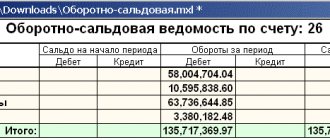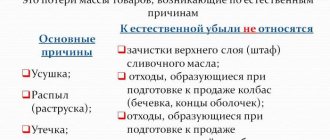- home
- Investments
Anastasia Osipova
0
Article navigation
- Long-term investments in accounting
- Regulations on accounting for long-term investments
- Accounting for long-term investments: postings
- Typical wiring
- Organization and procedure for accounting for long-term investments
Long-term investments are the company's costs for the creation and acquisition of non-current durable assets that are not intended for sale. As sources of their financing, the enterprise’s own funds (net profit, amortization of intangible assets) and attracted funds (bank loans, borrowed funds from other organizations, targeted financing from the state budget, etc.) can be used.
In accounting, financial investments are considered as an independent object along with fixed assets and intangible assets. This approach is associated with the concept of separating costs between the company’s current activities and investments. The main purpose of accounting is to fully reflect information about long-term investments. If we consider the accounting of financial investments briefly, we can say that this is an influx of new capital in the reporting year.
Basic terms, types of investment funds
So, investment funds include institutions that engage in collective investments, managing the savings of individuals and legal entities, investing them in the purchase of securities. This activity is carried out by a professional stock market participant who, thanks to his knowledge and experience, is able to minimize investment risks.
There are several types of investment funds. First of all, these are mutual investment funds (UIFs), whose activities are based on joint investment.
They also include: the Russian investment fund, which acts on behalf of the state; mutual funds, which is a form of mutual investment; hedge funds - which are not available to everyone, there are no regulatory restrictions on them and they are managed by professional investment managers; There are also checking investment funds and exchange traded funds.
It is worth considering in more detail a mutual investment fund (UIF), which in order to carry out its activities (trust management of fund property) is not required to form a legal entity, while it is formed from the funds of shareholders-investors. Trust management is carried out by a special management company.
Assessment of financial investments
Please note that as part of the organization of accounting for financial investments, most of them do not need to be revalued. The fact is that only securities listed on the stock exchange are taken into account at market value. The remaining financial investments - at least once a year on December 31 - must be checked for impairment and, if necessary, a reserve must be created (clauses 20 and 38 of PBU 19/02).
Also see “Which account are financial investments recorded in?”
Read also
28.05.2019
Features of accounting for initial placement and redemption of shares
Let's look at the features of accounting for primary placement transactions in the table:
| № | Contents of operation | Account correspondence | |
| Debit | Credit | ||
| 1 | Investors' funds were received as payment for investment shares | 51 “Current account” | 86 “Targeted financing” (sub-account “Investment shares”) |
| Accounting for the sub-account “Investment units” is carried out with each issue of investment units and for each investor separately | |||
| 2 | Redemption of investment units by a company | 86 “Targeted financing” (sub-account “Investment shares”) | 51 “Current account”. |
fair value
As you can see, investment property requires mandatory valuation at fair value. But what is this characteristic? – To determine it, one must be guided by International Financial Reporting Standard (IFRS) 13 “Fair Value Measurement” (put into effect on the territory of the Russian Federation by Order of the Ministry of Finance of Russia dated December 28, 2015 No. 217n).
Fair value is an estimate based on market data. The purpose of measuring the fair value of an asset is to determine the price (from the perspective of a market participant who holds the specified asset) at which an ordinary transaction between market participants to sell the asset would be carried out at the measurement date in current market conditions (clause 2 of IFRS 13 ).
We have described fair value in general terms.
We omit the nuances of its definition. EXAMPLE 1. EVALUATING THE BENEFITS FROM INCREASE IN VALUE
A company purchased a plot of land as an investment property.
Its initial cost is 450,000 rubles (on the basis of subclause 6, clause 2, article 146 of the Tax Code of the Russian Federation, VAT is not charged). The accounting policy establishes the fair value accounting model. Initially, the fair value of the plot was estimated at 400,000 rubles, and a year later – at 650,000 rubles. Under such conditions, the accountant will make the following entries: DEBIT 08 subaccount “Investment Property” CREDIT 76, 68, etc.
- 450,000 rubles.
– the initial cost of the land plot has been formed (payment to the seller, remuneration to the intermediary, state duty, etc.); DEBIT 06 CREDIT 08 subaccount “Investment real estate”
- 450,000 rubles.
– the investment property was accepted for accounting; DEBIT 91-2 CREDIT 06
- 50,000 rub.
(450,000 – 400,000) – the fair value of the object has been formed (immediately); DEBIT 06 CREDIT 91-1
- 200,000 rubles. (650,000 – 450,000) – the increase in fair value is reflected (in a year). Let’s evaluate the benefit from the increase in the value of the site. The company's annual income is 150,000 rubles (200,000 - 50,000), which in relation to the initial costs amounted to 30% (150,000 rubles: 450,000 rubles × 100%) per annum.
Features of accounting for costs incurred by mutual investment funds"
The procedure for accounting for costs is given below:
| № | Contents of operation | Account correspondence | |
| Debit | Credit | ||
| 1 | The accounting records reflect a reserve for payment of management costs (sub-account “Investment shares”) | 96 “Reserves for future expenses” (sub-account “Reserve for payment of services of the management company and other persons”) | |
| 2 | The amount of the accrued reserve was written off to reimburse the cost of costs and remuneration for the management company (according to the Mutual Fund Rules) | 96 “Reserves for future expenses” (sub-account “Reserve for payment of services of the management company and other persons”) | 76 “Settlements with various debtors and creditors” |
| 3 | The amount of payments for expenses is reflected | 76 “Settlements with various debtors and creditors” | 51 “Current account” |
| 4 | The reversal of excessively accrued amounts for cost items (necessary for managing the property of mutual funds) is reflected. | 86 “Targeted financing” (sub-account “Investment shares”) | 96 “Reserves for future expenses” (sub-account “Reserve for payment of services of the management company and other persons”) |
If actual expenses for cost items exceed the amount of contributions to the reserve, then the difference in this excess will be reflected in the costs of the management company.
Results
Investing in fixed assets (making capital investments) refers to the process in which an enterprise invests capital in the creation, modernization or purchase of fixed assets. Before this object is accepted on the balance sheet, account 08 is used to account for investment in it. Afterwards, accounting for the fixed assets object is carried out using account 01 (in accordance with the norms of PBU 06/01 and corresponding sources of law).
You can get acquainted with other facts about the capital investments of the enterprise in the articles:
- “Capital investments in accounting are...”;
- “Formula for calculating specific capital investments (nuances)”.
You can find more complete information on the topic in ConsultantPlus. Free trial access to the system for 2 days.
Features of accounting for costs incurred by the management company
Cost accounting is reflected in the following entries:
| № | Contents of operation | Account correspondence | |
| Debit | Credit | ||
| 1 | Remunerations were accrued in the accounting records of the management company | 76 “Settlements with various debtors and creditors” | 90.1 "Sales" |
| 2 | The accounting records the receipt of remuneration | 51 “Current account” | 76 “Settlements with various debtors and creditors” |
| 3 | Expenses accumulated on account 26 “General business expenses” (advertising expenses, travel expenses associated with the management of mutual funds, etc.) are written off as a cost reduction to reduce revenue | 90.2 “Cost of sales” | 26 “General business expenses” |
| 4* | The financial result from the activities of the management company is written off to account 99 “Profits and losses” | 90.9 “Profit (loss) from sales” | 99 "Profits and losses." |
| Peculiarity | At the end of each month, the financial result must be calculated, which is determined by comparing the turnover in account 90.1 “Revenue” (credit turnover) and the total debit turnover. This is followed by point 4*. | ||
Accounting for investments in fixed assets: basic regulatory standards
The legislator's main attention is paid to accounting for the results of investments - directly the fixed capital listed on the organization's balance sheet. As soon as fixed capital is formed and reflected in accounting at its original cost, it already falls under the jurisdiction of the specified rules of law - order No. 91n and PBU 6/01.
Until the moment an object of fixed assets is registered, an accountant can legally be guided by only one source of law - Order of the Ministry of Finance of the Russian Federation dated October 31, 2000 No. 94n, which introduces charts of accounts used by private enterprises.
Some regulatory legal acts (LLA) regulating the activities of investment funds
It is recommended to study the following documents:
| Item no. | Document Number | Type of legal acts | Name of legal acts | Date of entry into force of the legal acts |
| 1 | Federal Law No. 156 | the federal law | "About investment funds" | November 29, 2001 |
| 2 | №633 | Decree of the Government of the Russian Federation | “On the standard rules” for trust management of an open-ended mutual investment fund (OPIF)” | August 27, 2002 |
| 3 | №684 | Decree of the Government of the Russian Federation | “On the standard rules” for the trust management of an interval mutual investment fund (IPIF)” | September 18, 2002 |
| 4 | №564 | Decree of the Government of the Russian Federation (as amended on April 18, 2013) | “On the standard rules” for trust management of a closed-end mutual investment fund (CLIF)” | July 25, 2002 |
| 5 | №600 | Decree of the Government of the Russian Federation | “On approval of the Standard Rules for the Trust Management of an Exchange-Traded Mutual Investment Fund” | July 15, 2013 |
| 6 | No. 553-P | Regulations of the Bank of the Russian Federation | “On the procedure for maintaining the register of mutual funds by the Bank of the Russian Federation and providing extracts from it, on the requirements for a report on the consolidation of property of mutual funds, the procedure and deadline for its submission to the Bank of Russia” | September 22, 2021 |
| 7 | No. 4044-U | Directive from the Bank of the Russian Federation | “On the requirements for the deadlines for accepting applications for the acquisition, redemption and exchange of investment units of an interval mutual investment fund” | June 16, 2021 |
| 8 | 22/ps | Resolution of the Federal Commission for the Securities Market of the Russian Federation | “On the suspension of the issuance, redemption and exchange of investment units of mutual funds” | July 3, 2002 |
How to account for investments in fixed capital according to Order No. 94n (on accounting accounts)
The order in question introduces account 08 “Investments in non-current assets”, which can be legally used to reflect investments on the balance sheet of an enterprise as accounting objects. But as soon as the result of these investments is the manufacture or acquisition of a fixed asset, its accounting is kept in another account - 01 “Fixed Assets”, and this accounting is regulated, as we noted above, by the norms of Order No. 91n and PBU 6/01.
Account 08 “Investments in non-current assets” can reflect costs incurred from any sources of financing:
- own;
- borrowed;
- allocated from the budget.
Account 08 reflects the costs of creating, modernizing, as well as maintaining the enterprise’s capacities, purchasing equipment, machinery and other production and non-production fixed assets.
This is evidenced by the provisions of clause 1.2.1 of the Recommendations for accounting in agricultural cooperatives, approved by the Ministry of Agriculture of Russia on January 25, 2001. Based on the principle of legal analogy, due to the absence of other industry norms, this formulation can also be applied to enterprises in other areas not related to agriculture.
An enterprise, when accounting for investments in fixed assets, can open various sub-accounts to account 08 if necessary. For example, if capital investments are made in the independent production of an asset, then subaccount 08.03 “Construction of fixed assets” can be used. If an asset is purchased, subaccount 08.04 “Purchase of fixed assets” is used.
Account 08 of the Chart of Accounts is rightfully classified as active. That is, its debit reflects directly investments in working capital, and its credit reflects the write-off of the enterprise’s costs in the process of capitalizing certain assets. The entries in this account reflect the monetary value of business transactions on an accrual basis from the beginning of the reporting year.
In what cases are investments in non-current assets subject to property tax, ConsultantPlus experts explained. Get trial access to the K+ system and go to the Tax Guide for free.
Let us now study the nuances of accounting for investments in fixed assets using the specified account and its subaccounts in more detail.
Investments in OS can be made in the form of:
- investments in independent production of funds;
- investments in the production of funds using contractors;
- purchases of ready-made funds.







